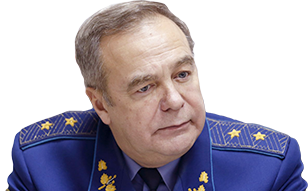Addressing participants of the Sea Breeze 2018 multinational exercises, Ukrainian President Petro Poroshenko mentioned that Russia could be plotting an attack on Ukraine's strategic port in the Sea of Azov, Mariupol, and, possibly, an offshore naval operation. According to the president, following the Russian occupation of Crimea, the situation in the Black Sea region has been growing extremely tense while Russia has since been amassing its forces in the occupied territories.
But in order to realize the probability of the offensive, first of all, we need to analyze the present situation in the Black Sea and the Sea of Azov. In fact, it deteriorated because the Russians had actually strengthened their combat potential in Crimea by transferring there all kinds of modern technology of land, air and naval (submarine) forces that they had been manufacturing in recent years, thus forming a strike group armed with rocket and anti-aircraft missile systems and submarines. They also conducted exercises and combat coordination of military groupings in the area. In the Sea of Azov, they have been violating international maritime law by the construction of the Kerch Strait bridge which forced Ukraine to limit the height of cargo ships navigating to and from the ports of Mariupol and Berdyansk. In addition, they inspect all ships that enter said ports, both Ukrainian and foreign vessels, which is also a violation of international agreements.
Today, Russia does not recognize a single document between Ukraine and Russia on the Azov Sea
Unfortunately, today Russia does not recognize a single document between Ukraine and Russia on the Azov Sea. For example, there is a document aimed at recognizing the Azov internal waters, as, for example, it was between the Ukrainian SSR and the Soviet Union. In this case, Russia believes, an area too big will fall under Ukraine's control. Another option is for both states to control 12.5 nautical miles but, taking into account the economic zone, in this case Ukraine will also get a larger piece. The third option is to recognize the waters of the Sea of Azov as international, but this option does not suit Moscow either, since then foreign companies will be able to work here and use the coast and waters adjacent to Ukraine. It is clear that in this case foreign warships will be able to enter these waters, too, which is clearly not in Russia's interests.
The average depth of the Sea of Azov is about 9 meters and here, according to specification, ships and boats should navigate with a max draft of 4.5 meters. This is exactly the type of warships Russia has been deploying in the area recently - rocket-artillery boats and landing equipment, which earlier performed tasks within the Syria campaign, only from the Caspian Sea. This way, Russia is boosting its military presence in the region.
Ukraine also has its own Gyurza artillery boats, able to operate in conditions of such draft - they are brand new and ready for use. In addition, Ukraine is also using its land forces contingent, conducting necessary exercises and tank live fire drills with sea targets, adequately preparing all forces available to repel possible aggression, in connection with the escalation in the Azov Sea.
Russia, of course, might increase pressure in the water area, but then local hostilities will break off, which could provoke a deeper version of hostilities and eventually grow into a large-scale war
It is important that Sea Breeze exercises are being conducted annually, where interaction of the Ukrainian Navy with naval forces of NATO Allies is being worked out, using including a number of marine, air, and land means. And, as the Russian Federation has significantly increased its submarine presence, a Turkish sub takes part in the drills to be used as a conventional adversary for the warships to detect and engage it...
Russia, of course, might increase pressure in the water area, but then local hostilities will break off, which could provoke a deeper version of hostilities and eventually grow into a large-scale war. But at the moment, that is not something Vladimir Putin seeks – instead, he is looking for opportunities to resolve pressing issues in a less costly way. This is evident from his latest talks with Trump where they probably discussed the issue of Crimea, with each of them standing firm by their positions. In this situation, Putin seeks to become a kind of a peacemaker: without launching any large-scale military action, to retain political pressure on Ukraine.
Lt Gen (Rtd) Ihor Romanenko is a military expert, Candidate of Military Sciences, Doctor of Technical Sciences, Professor, ex-deputy chief of the General Staff of the Armed Forces of Ukraine


